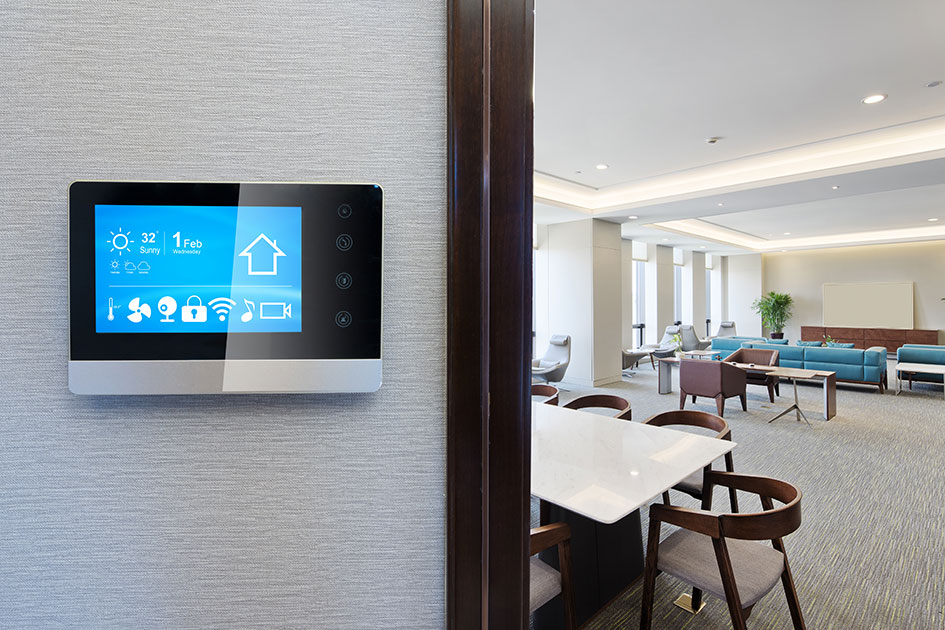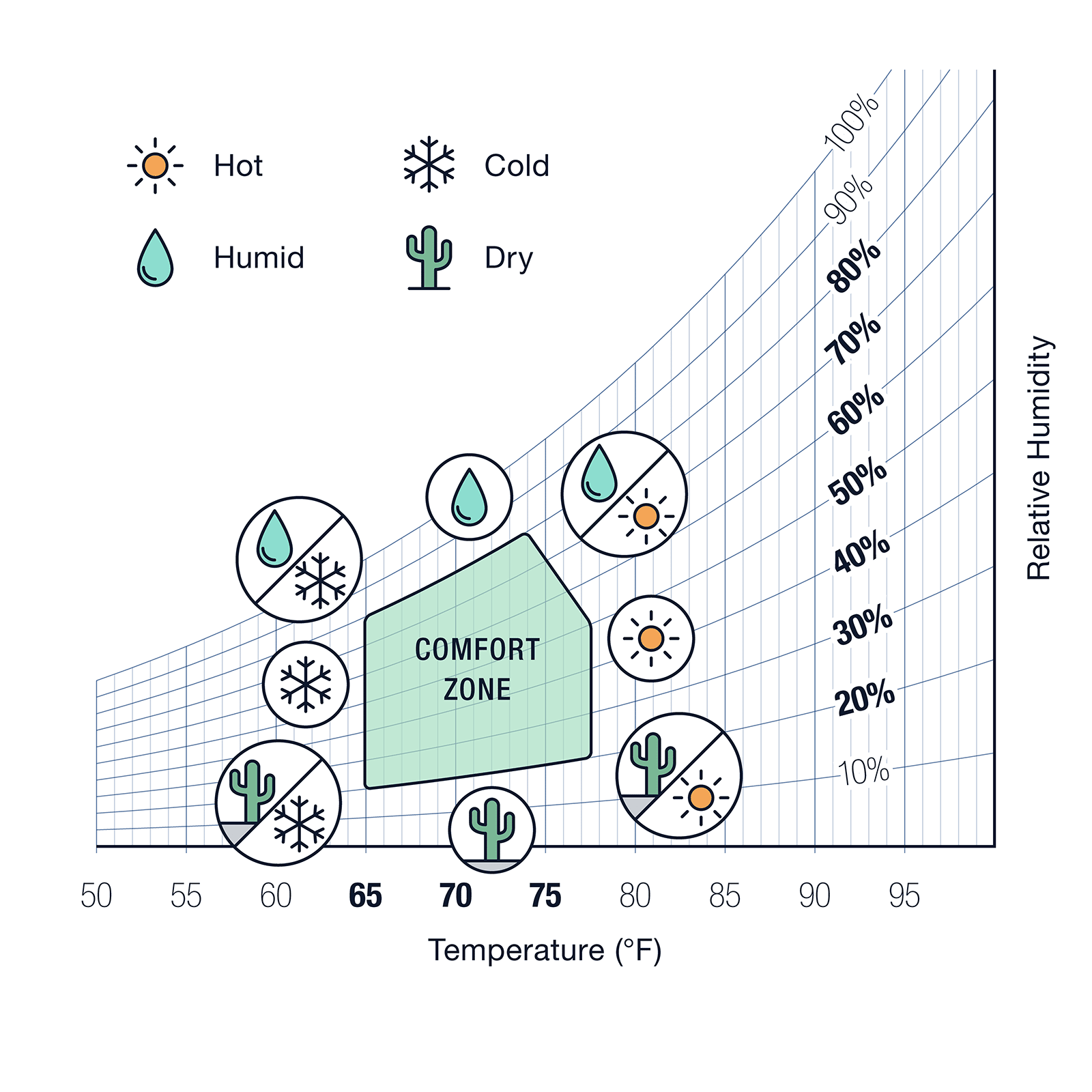

Six Tips To Improve Your Relationship with Your Thermostat
By Chandra McCarthy, PE
You are slouching at your desk, about to enter a heat-induced napping session. How is it that your coworker is merrily working away in a sweater? He must be part reptile. You try to keep your eyes open and continue working, but your vision drifts. A sleepy glance at the thermostat reveals that it is 74°F inside.
Wait, what? It feels more like 84°F! You know from experience at home that 74°F should feel like a cool oasis. So why are your feet saturating your socks with sweat right now? It cannot actually be 74°F. The thermostat must be faulty!
While there is a chance that your thermostat is a dud, there are several other explanations. Before you chuck it out the window for lying to you, here are six tips to help you understand and get the most out of your thermostat.

Tip #1: Consider the Location of Your Thermostat
Your thermostat reading may not be indicative of the temperature in the rest of the room. Thermostats often struggle to produce accurate temperature readings due to air stratification. In other words, temperatures can vary across different points in a room. Because hot air rises, a thermostat mounted high on the wall will read higher than one on the floor. On a similar note, the position of your thermostat relative to certain components within the room can also affect the reading. For example, place your thermostat next to a television and watch the temperature increase. Other components affecting your readout include proximity to heating/cooling terminals, appliances/equipment, windows, and exterior walls.
If you get to choose the location of your thermostat, look for an interior wall away from components that add or remove heat, and place the thermostat 3’ to 4’ off the ground. If the thermostat is already installed, consider what unwanted influences may be affecting the temperature at that location and adjust your temperature setpoints accordingly.
Tip #2: Be Mindful of Windows
Summer sun filtering in through windows can make building occupants unduly hot. The same is true of your thermostat. If it is sitting in direct sunlight, it will read at a higher temperature. This might all work out well if you, too, sit in the sunlight and feel the heat. However, if your thermostat is soaking in the rays and ramping up the cooling to compensate, the remainder of your space may become over-cooled.
The solution? Use window treatments to help modulate the temperature in sunny rooms. Also, consider simply rearranging furniture. These measures can help individual occupants achieve their desired amounts of sunshine.
Tip #3: Understand the Effects of Humidity
Inside your thermostat, you have a conglomeration of metals or metal oxides that are key in determining temperature. Thermostats work because these materials have known properties that vary with temperature. However, the balls or strips of metal in your thermostat have no way to sense humidity. Humans, on the other hand, are very perceptive of humidity levels. Humidity can make a cool room clammy and a hot room sticky for humans. Humidity levels could very well be why you disagree with your thermostat over the number it is displaying.
Below is a psychrometric chart that helps visualize the properties of moist air. Various temperatures are read across the bottom, and specific humidity is along the vertical axis. The curved lines indicate relative humidity—the measure we hear mentioned most. Humidity and temperature play into how comfortable you are, as indicated by the comfort zone on the chart. Outside the comfort zone, discomfort is caused by various combinations of temperature and humidity.

Why does this matter? Well, it’s important to remember that your thermostat is only working with the temperature. If you’re curious about humidity, consider purchasing a hygrometer to monitor conditions. Realize that you may have to play with the temperature set point to land within your comfort zone for days/seasons with differing humidity levels. If humidity is a problem in your space, the website Porch offers helpful tips for removing humidity from your home.
Tip #4: Control the Breeze
Sitting next to an air terminal dispersing air into your space can greatly affect how hot or cold you feel. It resembles the “feels like” temperature your weatherman provides on a windy day. “Feels like” temperatures are yet another thing your thermostat cannot detect, but you definitely can. On a cold day, the warm air layer next to your skin that you were relishing can be swept away, leaving goosebumps. On the flip side, sweat droplets beading on your skin on a hot day will evaporate faster with a breeze and provide cool relief.
The good news? Many air terminals are adjustable, and the direction of the airflow can be tweaked to increase comfort.
Tip #5: Be Patient
This is a simple one. Every time you adjust your thermostat, your system will need anywhere from a few minutes to a day to do your biddings. Allow ample time in between adjustments.
Tip #6: More Zones Equals More Control
In the office, your reptilian coworker consistently cranks the thermostat to 85°F. If that’s how he likes it, that’s great. But why does your space also feel the heat? It’s likely because you both sit in the same zone.
HVAC systems are comprised of zones. Each zone gets its thermostat. For a simple or small system, there may be only one zone. A more complex office building may have numerous zones. The amount of personal temperature customization is determined by how many zones (and, thus, thermostats) you have. If Mr. Lizard sits closest to the thermostat and is thus able to adjust it readily, it may be time to have a group discussion with everyone in the zone. It may be impossible to satisfy everyone in your zone, but most occupants should be able to find some comfort.
If you’re building something new, the project engineer can help you add the right amount of control to the HVAC system.
Some Final Thoughts on Thermostats and You
The key takeaway should be that the number on your thermostat is just that—a number. It’s a reference point to help you adjust your heating and cooling setpoints, but don’t put too much stock in it. Bump your thermostat up in small increments if you’re cold and down if you’re hot.
Also, don’t underestimate the value of some new window treatments or a diffuser adjustment when it comes to improving the comfort of your space. These are small changes that can make a big difference!
Lastly, every space is different. Would you like help with your thermostat? Feel free to discuss how to maximize comfort and thermostat satisfaction in your unique space.


